The warming of cottages will help not only make the atmosphere with a home cozy and comfortable, but also save on heating and extend the deadlines for the operation of the building. At the same time, it is not necessary to spend large sums on the purchase of expensive thermal insulation materials and hiring workers. Heat a honest lodge is quite realistic on its own even without professional construction skills.
Content
Preparatory work
The country house can be pulled off with electrical appliances, stoves and thermal installations, but no climatic device will save tenants from the cold, if you do not debug energy saving. Otherwise, you will have to spend large sons of electricity, fuel materials, etc.
Starting work on the warming of cottages should be with careful planning of their actions. First of all, it is recommended to give an adequate assessment of the building of the building and reveal the so-called cold bridges - the most vulnerable places through which heat comes out.
It also makes sense to think about redeveloping rooms, especially if the cottage consists of small rooms. So that the heat is distributed evenly, it is better to organize one large space with a furnace or to provide heat outlet in all rooms.
For cottage with an attic, the optimal solution will be the organization of a two-week space when the room on the first floor will be seen from the attic. From the initial course of physics, it is clear that warm air always strives up, so it will be much more pleasant to spend the night in such a warm attic.
During the planning of insulating work, pay attention to the following factors that will help you save money and forces:
- the insulation of the house outside is much more efficient than from the inside;
- internal wall insulation always takes free space, and the area of \u200b\u200bthe room decreases;
- one sealing of windows, doors, sex gaps and cracks in the walls reduces heat loss by 30%;
- to achieve the maximum result, ensure an integrated approach, insulate all parts of the house: floor, roof, walls inside and outside, windows, doors.
The high-quality thermal insulation of all elements of the building will improve its operational characteristics, however, and in this matter it is necessary to know the measure. So, if "rearranged" with the sealing of windows, you can disrupt the operation of the ventilation system, which will lead to the formation of condensate and mold.
Selection of heat insulating material
The modern building market offers a huge variety of thermal insulation materials for any needs. For giving, especially if it is temporary seasonal housing, you can use the most simple and proven agents.
What to warm the cottage:
- Foamed expanded polystyrene is characterized by a very dense structure and low weight. Mainly used for the insulation of facades.
- Extruded expanded polystyrene is characterized by almost complete waterproof, low thermal conductivity, but rather high price. It can be used not only as a heater, but also as auxiliary waterproofing.
- Mineral wool is one of the most common materials. It is distinguished by a fibrous structure, resistant to temperature drop, gives excellent sound insulation, keeps heat inside the room well. The low cost and simplicity of installation make mineral wool the most sought-after building material among dacities.
- Glasswater - a material that provides good heat and sound insulation, non-hygroscopic, is resistant to chemical influence. It has a low thermal conductivity. Due to the specifics of the installation, it is used less frequently than mineral wool (when contacting the skin causes a strong allergic reaction).
Select the heat-insulating material for the cottage should be based on the loads that it will be subject to operation. So, if you insulate the house siding or make a ventilated facade, the optimal option will be glass gamble. It is pretty light, completely non-combustible, perfectly holds warmth. If you mount the bonded facade, the mineral wool is suitable for you, because it can withstand the load from plaster.
Before buying a heater, carefully examine the following material criteria:
- Specific weight - than it will be less, the better (from 14 to 20 kg per cubic meter). Lightweight insulation can be delivered to the house on a personal car or save on a taxi cargo. It is much easier to mount it, and the load on the facade will be less.
- Non-hatching - thermal insulation should not burn. Maximum - melt, but do not burn. This is an integral factor, especially for ventilated facades, because the gaps contribute to the rapid spread of fire.
- Heat conductivity - Choose materials with the lowest thermal conductivity. This indicator depends on the airiness of the material.
- Durability - the operational period of material should be at least 20 years.
- Parry permeability - what it is higher, the better. Parpural isolation will create a comfortable microclimate indoor and will not allow to accumulate condensate. In the case of ventilated facades, it eliminates excess moisture, with wet - helps the plaster dried quickly and evenly.
- Ecology is the last, but no less important criterion, especially if children will live in the country. Examine the composition of the insulation and make sure that it includes natural raw materials. Ideally, the material must be certified by European standards.
Methods of insulation of cottages
Country houses built about 15-20 years ago, as a rule, do not have the insulation of the facade at all, so the tenants are forced to either pull the air or carry out overhaul.
To date, the following methods of insulation of the facades of country houses are known:
- wet;
- dry (siding);
- ventilated facades.
High-quality insulation guarantee only half of the success, the second half depends on the correctly selected system. The "fur coat" should be created solely outside and only to be reinforced with internal heat insulation, but not the opposite. If you insulate the walls only from the inside, the cold will still pass through the entire thickness of the wall, as a result of which the condensate will appear, and the deadlines of the house will be significantly reduced.
Wet method
This technology insulation of cottages houses is the most common in Russia. The system of bonded thermal insulation costs relatively inexpensively and is a design of several layers, and each of the elements can be replaced at any time without harm to "fur coats". The service life of the system is 25-30 years.
Warming is carried out by polystyrene foam or mineral wool. The material is attached to the dowels, apply glue, laid waterproofing and make reinforcement to increase the stability of the facade to external mechanical effects. Next, the surface is ground and the finish coating is applied. So you get not only warm, but also a beautiful house.
Bonded thermal insulation happens two types:
- Easy - insulation plates are attached to the wall with glue and dowels, after which they are immediately placed with a layer of no more than 10 mm.
- Heavy - after fixing the insulation, the armature and waterproofing are carried out, and the primer layer can reach 30 mm.
How to carry out thermal insulation wet method:
- Prepare the base - check the smoothness of the walls by the construction level and align them if necessary. This is necessary so that the insulation plates keep firmly and have not formed emptiness between the wall. Clean the surface from dust, dirt, cracked plaster or facing.
- Remove the drainage pipes and visors and window sills.
- At the perimeter at home, attach perforated profiles.
- Strong the walls, prepare the adhesive mixture and apply it to the heat insulation material.
- Attach the plates to the wall and lock the position with dowels with cartridges and washers. Construction standards obliges to leave small gaps in the case of using polystyrene plates (up to 2 mm). If the gaps turned out to be large, fill them with stripes cut off from the remaining insulation. As a result, you must have a monolithic contour.
- On top of the insulation, apply the waterproofing composition.
- Run the reinforcing grid by attaching it to the insulation and slightly drowned into the glue.
- Print the flashes net about 10 cm on each side.
- On top of the grid, apply a second layer of waterproofing to prevent corrosion of the metal.
- If you are plastering the facade, the thickness of the waterproofing must be at least 3 mm if dyeing is at least 5 mm.
- Carefully compact and seal the insulation of the insulation of the insulation to the door shots and the parapet of the house.
- Between the plates, window and doorways, pave silicone or acrylic waterproofing (you can "blend" by mounting foam). These are the most vulnerable places where moisture can accumulate, so it is necessary to reduce the risk of its penetration under the "fur coat" to a minimum.
- After 2-3 days, when the waterproofing will completely dry, you can start shuttering or staining the facade.
Dry method
Houses, covered with siding, are increasingly appearing on the periphery of large cities and in remote villages. This is due to the ease of operation of the material - siding is easy to clean, does not require the finishing finish, perfectly holds heat and creates an attractive appearance. In addition, siding instantly helps solve the problem of uneven walls without measurements, leveling and many hours.
Siding is a typeset panel made of vinyl, plastic, metal, etc. In length, they can reach from 2 to 6 m, in width - from 10 to 30 cm, in thickness - from 0.7 to 10 mm. Panels are not susceptible to rotting and damage to parasites, it does not crack, does not scratch and does not deteriorate from atmospheric precipitation. High-quality color siding does not fade under the sun. You can put it on brick, wooden, block and other plastered designs.
Siding installation can be carried out with any weather. It weighs a little, so you will not need any special technique. The deadline for applications by manufacturers is from 30 to 50 years.
In order to correctly insulate the cottage by siding, pay attention to the following nuances:
- When you peel the vertical crate to the walls, follow the observance of its step. The cross section of the bars should be selected with the thickness of the heat insulating material.
- Fix the bars with a dowel-nail.
- Put mineral wool into the clamp and close it with a vapor-permeable membrane - it will take an extra moisture, which is necessarily formed in the insulation as a result of the temperature drop from the inside and outside the house. Bold the film with a construction stapler.
- Understand the ventilation gap to ensure the correct operation of a vapor-permeable film, otherwise the moisture has nowhere to go out. The height of the clearance should be at least 20 mm. To make it, set the bars with a step equal to the first row of the crate.
- To fix siding, use only galvanized self-tapping screws equipped with a press washer.
Hinged ventilated facades
Hinged ventilated facades (NVF) are the most expensive method of insulation of residential buildings, but respectable appearance fully justifies the price. The NVF is a special subsender construction, a bonded anchor system, a layer of heat and waterproofing and a finishing coating.
NVF installation features:
- The sub-chart is fixed on the wall with a small gap between the finish coating and the thermal insulation material. This gap is the main difference of ventilated facades from all others. The pressure drop creates a airflow in the gap, which provides internal facade ventilation, outputing all extra moisture outward. In fact, such a design creates a natural system in a limited space, which automatically adjusts the humidity level.
- Another task of the airbone is to form an air buffer that reduces the heat loss of the house. In winter, such a cottage stays longer than warm, and in the summer - cool. As a result, the hosts essentially saved on heating and air conditioning housing. Electricity costs are reduced by 20-30%, and an expensive system pays for itself in the first couple of years of use.
- Conduct the installation of ventilated facades in any weather. Pre-preparation of walls is not required. For cladding usually use siding, fibro-cement plates, porcelain stoneware or natural stone.
Frequent Mounting Errors:
- stakes slabs do not match;
- mechanical damage to plates during installation;
- the use of cheap low-quality products.
Certified NVF serve 90-100 years in the most adverse climatic conditions.
Solar cottage
Having understood with the methods of insulation and choosing the appropriate material, you can move from theory to practice. Starting work should be used to eliminate the bridges of cold and sealing the slots, and the most problematic areas in this regard are in the area of \u200b\u200bwindows and doors.
Warming windows
The ideal solution to the problem of old-tie windows is the full replacement, but if there is no such possibility, there is a way to restore tightness on your own.
How to insulate windows at the cottage:
- Replace all broken or cracked glass. If there is an opportunity, organize a glass package, putting glass on silicone sealant and strokes pressed them to the frame.
- Get all the cracks in the frame with a putty on wood and sealant.
- Paint frames.
- Check if drafts remained in the windows area. If you blow, use the mounting foam and plaster with the kelper.
- Finally, you can climb all the opening elements of a foam ribbon, cotton or a conventional crumpled newspaper, and to stick tape from above. Such a budget "Dedovsky" method will help with limited financial capabilities.
Warming of doors
When the windows are finished, you can move to a larger problem - the insulation of the doors. In the country house, they play the role of a kind of valve that prevents cold access. It is especially important to take care of the tightness of the doors if there is no pre-banner or veranda in the house.
How to insulate the doors in the country:
- At the edges of the door, felt or a special rubber strip.
- Warm canvas (relevant for metal doors).
- On the inside, we bring two transverse timber with through bolts. Outside, only smooth hats should remain, so as not to create a traumaous situation.
- We cut the door to foam, putting it between the bars.
- On top of the polyfoam, screw the sheets of the OSB leaf to the bars. As a result, from a conventional cold metal door you will have a warm and silent barrier from the cold.
Outdoor work
With each completed stage inside the country house, everything is warmer, but one thing clog the cracks in the window frames, and completely different - to warm the cottage outside. For such a large-scale work, you will need high-quality thermal insulation material, fastened and several days of free time.
Let us give an example of the insulation of an ordinary wooden house:
- Make the crate and come down to the outside of the walls of the house.
- Treat the facade of antiseptic compositions.
- Place the thermal insulation material and secure it on the crate with nails, screws, "mushrooms", etc.
- On top of the insulation, lay a vapor barrier film or waterproofing (depending on the insulation technology).
- If necessary, install the crate for an external finish, for example, siding.
It is useful: there is an opinion that the thicker layer of thermal insulation, the better, but it is not quite so. Massive thermal insulation will have a load on the facade and accumulate more moisture than light and more subtle materials. The quality of work depends not on the thickness of the insulation, and on how correctly the technology is observed.
Internal works
Many stop on the outer insulation and do not take any internal work, but that the house is truly cozy even in the most fierce frost, it is necessary to ensure both types of insulation. If you have installed good insulation outside, inside it is not necessary to try something large - just fix the result.
Warming of the cottages from the inside:
- Use cheap and affordable materials, such as mineral wool or foam.
- Remove the old coating from the wall (Wallpaper, cracked paint, tile) and make a frame from a metal profile or wooden plates.
- Attach the insulation to the crate.
- Place a vapor insulation membrane from above.
- Close the wall with OSB sheets, plasterboard or wooden clapboard. Sheet materials later can be attached and painted in the desired color.
Floor insulation
Through the floor of the country house, no less heat leaves than through the wall or roof. In addition, if the foundation is not insulated, the legs of the tenants will be frozen even in the warm season. The optimal version of the insulation of floors in the country is the laying of foam or mineral wool.
How to insulate the floor in the country:
- Disassemble outdoor coverage.
- Clean the draft floor and make the frame under the flooring (set the lags).
- Between the lags, put the liter polyfoam (minimum 3-4 cm) or mineral wool. Insert the elements as close as possible to each other.
- Shipping floors with boards or OSB and proceed to decorative coating (painting, varnishing, tile, etc.).
Roof insulation
The last stage is the insulation of the roof. As you know, warm air always rises up, and if it does not interfere with it, it will come out, and you will stay in a cold house. However, little only insulate the roof, it is equally important to provide high-quality vaporizolation. Otherwise, warm air below and cold - from above will form condensate, and wooden elements (beams, rafters) are very quickly rotated.
As in the case of the floor, first it is necessary to create a frame and fasten the insulation. The only nuance is to do it all on the ceiling, so if you work with mineral wool, put on safety glasses and a respirator so that the sprinkled fibers do not hurt health. On mineral wool or other insulation, pull the vaporizolation membrane and attach it with the help of a construction stapler. After that, it is possible to close the ceiling by plasterboard or OSB and start the finish finish.
The insulation of the cottage with their own hands is a troublesome, but not a very difficult test that each owner of a country house must pass. Exactly following the technologies and choosing high-quality materials, you can recoup all costs for the first couple of years, and then with pleasure to watch how much money you save on electricity.

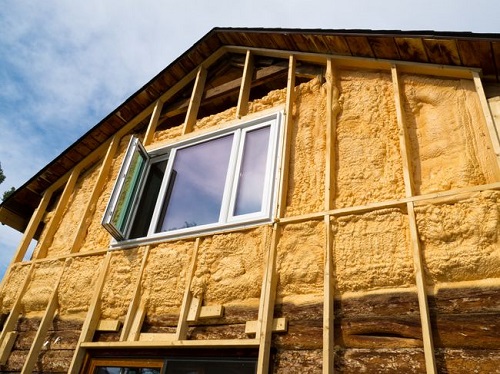
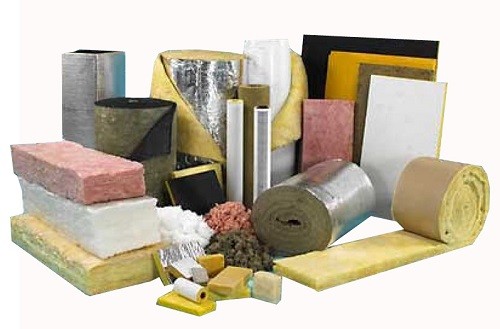
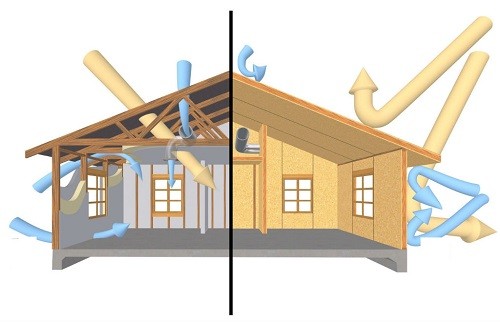

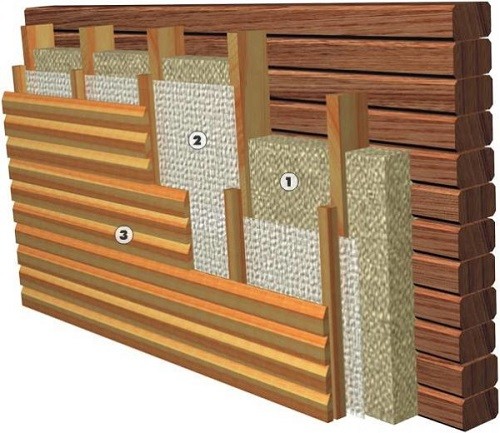

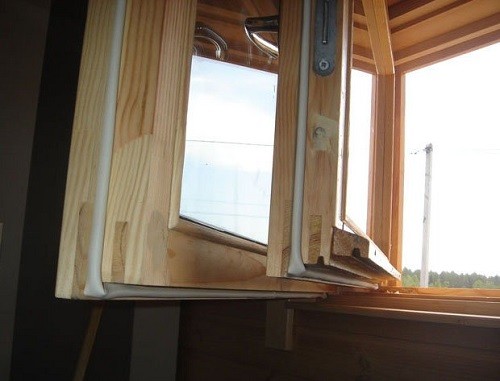
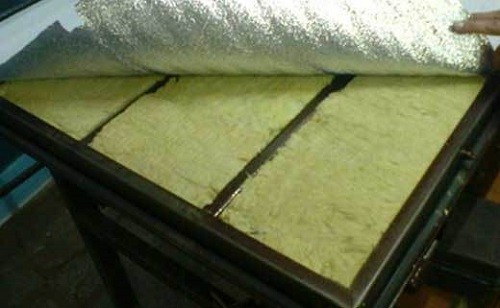


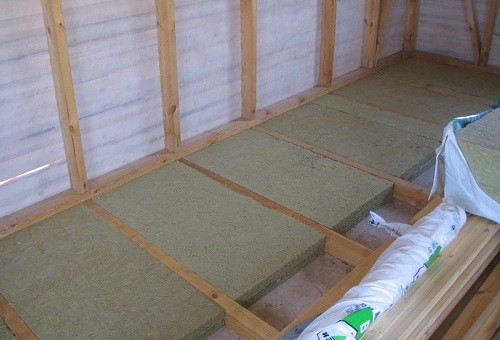
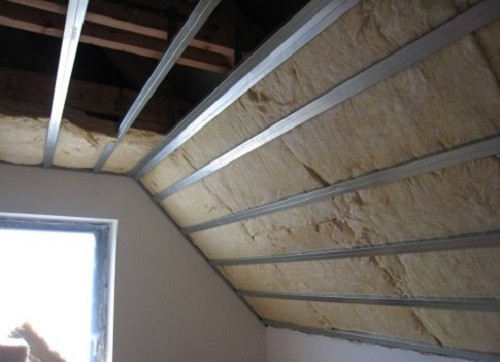


















Dacha himself insulated. I chose that b and in the work was comfortable and safe and that would not give the shrinkage, and otherwise what's the point of warming. Chose the heater of the North Moss. Satisfied! And insulation and their work
Good afternoon! Warm house around the perimeter in one layer. Work is serious, so I think, maybe in vain and do not save and how does the manufacturer advises, roof and put the floor in 2 layers? The insulation is arctic, cottage in the suburbs, we do not live in winter, only from spring to late autumn. Thank you for your reply
better on elektichestve and heating systems to save than rewiring